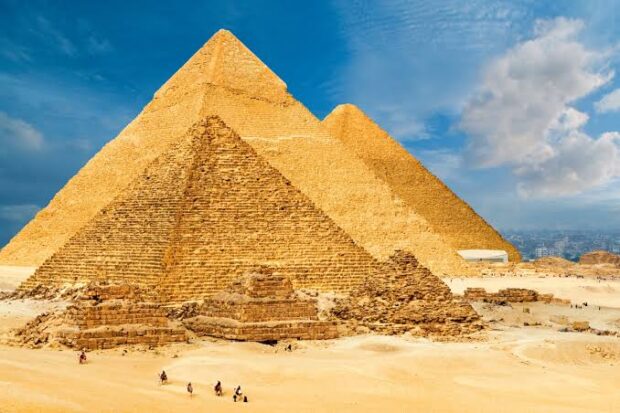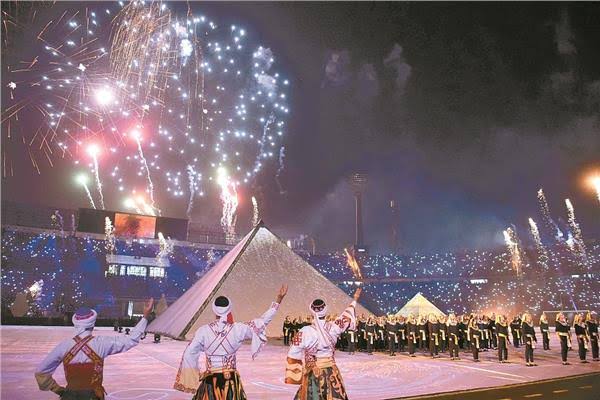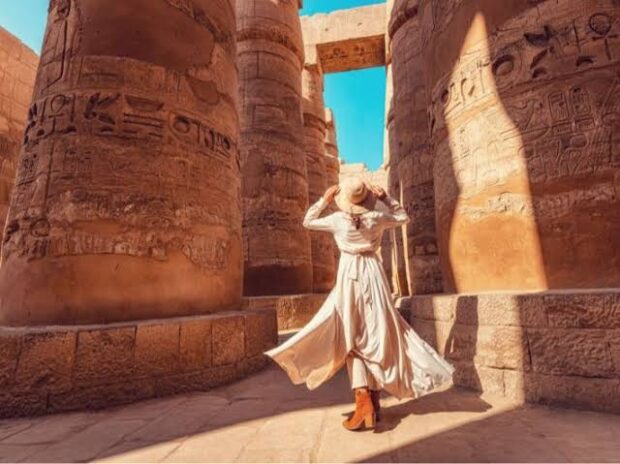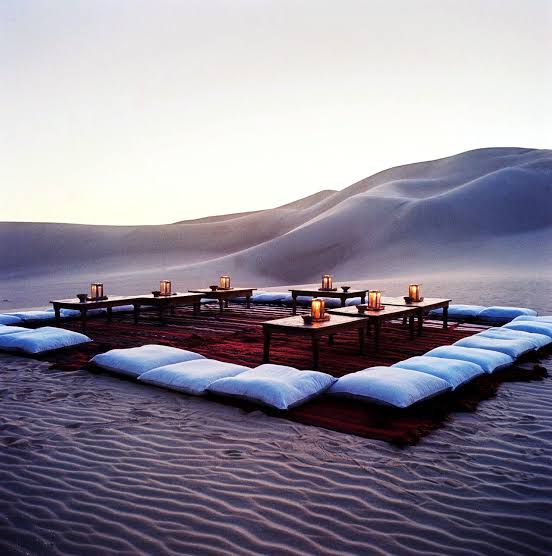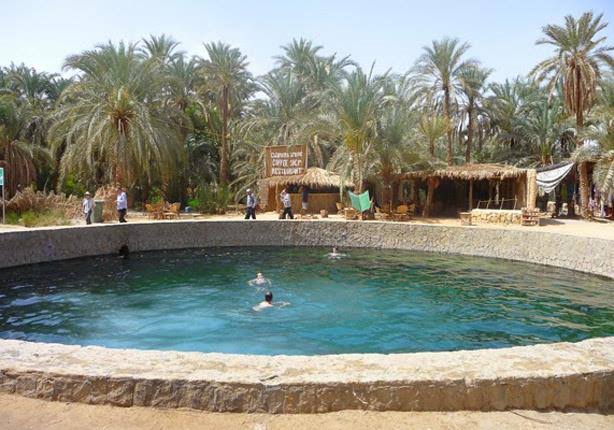Tourism in Egypt is considered one of the most important sources of national income, as it provides annual dollar revenues and foreign currency revenues that enabled it to participate significantly in the gross domestic product, and combat unemployment by employing a wide segment of the labor force in Egypt. Egypt is one of the most prominent tourist countries in the world, due to the number of tourists arriving in the world, and its distinction with the abundance of tourist attractions of all kinds, the spread of temples, museums, monuments, historical and artistic buildings, and vast gardens on its land, and its possession of a strong infrastructure based on serving the tourism sector, including Hotel rooms, villages, tourist resorts, tourism companies and airline offices. The regions of Luxor, Aswan, Cairo, Alexandria, the northern coast, the Red Sea, and South Sinai are among the most attractive areas for tourists in general. The history of tourism in Egypt dates back to the ancient Egyptians, and it continued as a desirable tourist destination over the past centuries and during contemporary history. On the list of World Heritage Sites.
The phenomenon of tourism developed in Egypt during ancient times, and the ancient Egyptians practiced many recreational activities, and were attached to sports tourism in its various forms. The movement of travel and travel between the different regions of Egypt was active, and the archaeological tablets recorded international relations between Egypt on the one hand and ancient Syria on the other hand, during which they exchanged visits that had all the characteristics of tourism in their modern meaning. During the Middle Ages, Egypt witnessed the brightest periods of tourism. As a result of the activity of travel and the expansion of the circle of Arab trips after the emergence and spread of Islam and the expansion of the Islamic state between the Indian subcontinent, North Africa and southern Europe, Cairo was one of the most important civilizational and cultural centers in the Islamic state and one of the richest, similar to several other Islamic capitals, and its palaces, gardens and libraries were among the shrines Which attracted large numbers of tourists, and the economic boom, security and desire for knowledge contributed to the boom in tourism and nomadic activity. The importance of Egypt’s tourism increased since the end of the eighteenth century and during the nineteenth century, and this is due to several factors, including the French campaign that restored contact between the Egyptian and its ancient civilization through the scholars accompanying the campaign who studied The Egyptian civilization revealed many monuments of value, and presented Egypt to the West through writings that talk about it, such as the book Description of Egypt, which led to its fame spreading and directing the attention of European countries to it. With the arrival of Muhammad Ali to the rule of Egypt, interest returned. In 1845, he established the “Traffic Authority” to supervise the land road connecting to India and the work of tourists, mail and goods, and relied on it to supervise the desert breaks, horses, carts and food for tourists, and to regulate traffic on the land road between the city of Cairo and the cities of Suez and Alexandria, telegraph towers were placed To report the arrival and departure of ships and tourist groups, as well as hotels equipped for the accommodation and accommodation of tourists. Cairo / Suez with stones, and set the first regulations for regulating the residence of foreigners and tourists in Egypt in May 1849. Saeed Pasha followed the path of his predecessors and issued in March 1857 the Saidi Regulations that organized matters related to tourists from their arrival in Egypt, during their stay, and until their departure. The influx of foreigners to Egypt during the reign of Khedive Ismail, whether for work or tourism, helped the influx of tourism to Egypt during that period, its participation in international exhibitions, and the exploitation of the occasion of the opening of the Suez Canal for international navigation to publicize Egypt as a tourist.
Forms of Arab cooperation in the field of tourism began with the spread of bilateral tourism agreements between a large number of Arab countries, which then turned into multilateral cooperation within the framework of the League of Arab States. It was also subjected to renewal and development, and the largest number of tourism agreements went to Egypt, which concluded 11 bilateral agreements with different Arab countries. tourism, preserving the environment and heritage, and facilitating tourist transportation procedures. In order to support tourism development efforts within the framework of the League of Arab States, the Arab Ministerial Council for Tourism was established in 1997 and the Arab Organization for Tourism in 2006. In October 2015, Egypt was elected as the head of the executive office of the UNWTO headquarters in Colombia.
God loved Egypt, with distinctive natural features that made it a destination for tourists throughout the ages. All countries of the world. So it possessed all the ingredients that put it on the map of world tourism.
Leisure tourism
Leisure tourism in Egypt attracts a large number of tourists from all over the world, given that Egypt has distinct beaches with a length of more than 3000 km on the coasts of the White and Red Bahrain, in which tourists spend their vacation in what is known as beach tourism. Among the recreational tourist cities in the first place are Sharm el-Sheikh, Dahab, Nuweiba, and Taba in South Sinai Governorate, Hurghada, Safaga, Marsa Alam in the Red Sea Governorate, and the city of Ain Sukhna in Suez Governorate. These areas are famous for their clear water, colorful coral reefs, rare fish, and the spread of marine sports such as diving and snorkeling. As well as setting up camps and beach camps between the beach and the mountains, or camps and mountain trips, and there are tourist resorts that operate throughout the year. The city of El Alamein in the northern coast region overlooking the Mediterranean also stands out as a promising tourist area, due to its many tourist villages along the sea coast. As for Nile tourism, it also attracts a significant number of tourists and captures their interest. Nile cruises and spending evenings on cruise ships along the Nile River constitute an important tourist attraction, as several Nile ships and floating hotels cross the Nile River from Cairo to Luxor and Aswan and vice versa, passing through all cities. Upper Egypt overlooking the river, and it has private marinas in each city to see its important landmarks separately.
Cultural tourism
Cultural tourism in Egypt is one of the most important factors of tourist attraction, as it represents the most important and oldest types of tourism, and the Pharaonic, Greek and Roman antiquities available in Egypt made entire cities open museums and contributed to the emergence of Egyptian museums of global standing, and lured archaeological missions and travelers to come to Egypt without interruption. Authors and writers are fascinated and have inspired hundreds of books in different languages.
Among the most important cultural and archaeological tourist areas in Egypt are the pyramids of Giza, the Sphinx, the Saqqara region, the Dahshur region in Giza, the Roman theater, the Roman baths, the temples of the Black Head, Caesarion, the pillar of the masts, and Qaitbay Citadel in Alexandria. As for the city of Luxor, it is an open museum, including one-third of the world’s monuments, the most famous of which is the Karnak Temple, Luxor Temple, the Valley of the Kings, the Valley of the Queens, and Deir el-Medina. As for Aswan, besides that it is a wintering place for tourists due to its warm weather in the winter, it includes several historical and archaeological sites such as the Abu Simbel temples, the island of Philae and the island of plants. Upper Egypt, in general, includes a number of historical monuments, such as the Dendera Temple in Qena, the Medion region in Beni Suef, Tell el-Amarna in Minya, the pyramids of Lahoun and Hawara, and the Qarun Palace in Fayoum. As for Lower Egypt, it includes the Temple of Wadjit, the Tell of the Pharaohs in Desouk, the city of Fuwah, the ancient area of Sa al-Hajar in Basyoun, and the monasteries of Wadi al-Natrun. In the Sinai, areas such as Mount Moses and St. Catherine’s Monastery. In the Western Desert, there are separate areas such as the temples of Hibis, Al-Quwaita, and Al-Rayyan in Kharga, the tombs of Mut, Al-Muzga, the village of Balat and the village of Al-Qasr in Dakhla, as well as the city of Paris, Farafra Palace, and the Bahariya Oasis.
Museums are also spread in almost every governorate of Egypt and vary between national, art and regional museums. Mostly each museum specializes in displaying antiquities that belong to a particular era or era, such as the Egyptian Museum, the Museum of Islamic Art, the Museum of Modern Egyptian Art, Al-Gawhara Palace, Al-Manial Palace, the Greco-Roman Museum and the Museum of Art. Nubia, the Museum of Fine Arts, the Coptic Museum, the Agricultural Museum, the War Museum, the El Alamein Military Museum and the Sunken Museum, in addition to the huge museums that are still under construction such as the Grand Egyptian Museum in the Pyramids Desert and the Museum of Civilization in Fustat, which will represent a qualitative and cultural leap and a great addition to Egypt’s cultural history and archaeological heritage, with what it will include. From a huge number of artifacts, museum display methods, and modern restoration laboratories.
Eco-tourism
Egypt has several rare environmental sites that attract visitors who want to learn about its natural and wild components. Natural reserves in Egypt are under the supervision of the Ministry of Environment, and they are visited on guided tours using recreational transportation, boat rides, or walking, depending on the region. Among the most famous of these reserves are Ras Muhammad Reserve and Nabq Reserve in Sharm El-Sheikh, St. Catherine Reserve, Jebel Elba Reserve in Halayeb, Taba Reserve. Which embraces the Colored Valley, Al-Ameed Reserve in Matrouh, Abu Gallum Reserve in Dahab, Lake Qarun Reserve and Wadi Al-Rayan Reserve in Fayoum, in which Wadi Al-Hitan is located, one of the World Heritage sites in Egypt, and includes the first museum of its kind in the Middle East for excavations and climate change, and restrooms for visitors. Aquariums are also among the landmarks of coastal cities, such as the Aquarium in Alexandria.
Medical Tourism
There are many springs and hot springs with mineral and sulfur water in Egypt, which vary in depth, capacity and temperature, and their water contains several mineral salts and some minerals of therapeutic value such as sodium carbonate, magnesium and iron. hospitalization. This is in addition to what the hospital areas enjoy in terms of a dry climate, moderate temperature and humidity, and what they contain of sand and silt that are suitable for healing from several diseases, such as rheumatic and skin diseases, bone diseases, the digestive system and the respiratory system, and the spread of herbs and medicinal plants on its land, from which drugs and vegetable and aromatic oils are extracted. There are many areas that enjoy the advantage of medical tourism in Egypt, such as: Helwan, Ain al-Sira, Ain al-Sukhna, Hurghada, Fayoum, the oases of the Western Desert, Wadi al-Natrun, Aswan, Safaga and Sinai.
Sports tourism
Sports tourism in Egypt is one of the important means of promoting and attracting tourists, and Egypt has a strong infrastructure in several sports such as football, handball, volleyball, squash, equestrian, golf, marine sports, fishing, and bowling, which qualified it to host several international and continental championships. It attracted many visitors from different countries to attend its event and enjoy watching their athletes and sports teams, so Egypt hosted the African Nations Cup for Football in 1959, 1974, 1986, 2006, and hosted the African Men’s Handball Championship five times, the last of which was in 2016, while it won In November 2015, the right to host the World Men’s Handball Championship in 2021, and obtained the right to organize the African Volleyball Cup of Nations for men in 2015, and it was entrusted with organizing the World Youth Volleyball Championship under 23 years for men, scheduled for 2017, Egypt organizes the Egyptian International Marathon in Luxor, the Pharaohs Rally, which starts from the northern coast to the Pyramids of Giza, and the International Pyramids Squash Championship, and it also succeeded in organizing the World Squash Championship for the first time in December 2015.
Festival tourism
Egypt holds a number of festivals that attract masses from home and abroad, with the aim of achieving several goals, including tourism promotion, diversifying the vocabulary of tourist attractions, encouraging shopping activities, and sponsoring artistic events. Abu Simbel, the annual celebration of the discovery of the tomb of Tutankhamun in Luxor, Cairo International Folk Song Festival, Cairo International Film Festival, Alexandria International Film Festival, International Documentary Film Festival, Ismailia Folklore Festival, Cairo International Festival for Experimental Theatre, Cairo Festival for Arab Media, Festival Feast of the Nile, the International Fishing Festival in Port Said, the International Equestrian Festival.
Conference tourism
Conference and exhibition tourism represents an important tourist pattern in Egypt due to its distinguished geographical location and political position that enabled it to host dozens of international conferences annually in the political, economic, cultural, medical and professional fields. The holding of these conferences is concentrated in Cairo, Alexandria, Sharm El-Sheikh, Hurghada and Ismailia, due to the availability of international conference centers in those cities that have technical and technological capabilities and modern equipment such as audio equipment and simultaneous translation in various languages, which made them a desirable destination for international conference organizers. Organizing and hosting conferences and exhibitions inside Egypt. Egypt has succeeded in organizing several successful international conferences such as the Conference on Support and Development of the Egyptian Economy, the Cairo International Book Fair, and hosting many international conferences, including the first international tourism stock exchange under the name of the Mediterranean Stock Exchange, the first international conference for Mediterranean businesswomen, the conference of the Federation of Tourism Companies and Organizations of America. Latin «Cotal», the conference of the General Federation of Italian Travel Agents and Tourism Companies «Fiafit». It also won two years ago the IMAX 2012 exhibition award in Germany for “incentives and conferences” tourism.
Religious tourism
Egypt abounds with many sacred religious places, whether Jewish, Christian or Islamic, to which hundreds of visitors come in what is known as religious tourism, and the relics and sanctities of the three monotheistic religions are spread throughout it, including historical Islamic monuments such as the Al-Hussein Mosque, the Ibn Tulun Mosque and the Al-Azhar Mosque, and many buildings and castles that record Islamic history of Egypt, including Saladin Citadel in Cairo, Qaitbay Citadel in Alexandria, and Nakhl Citadel in Sinai. As well as ancient Christian sites that record the path of the Holy Family, such as the Church of St. Sergius, in which the Holy Family sought refuge during their refuge in Egypt, the Hanging Church, the Monastery of St. Catherine, the Monastery of Anba Anthony, the founder of the Order, the Monastery of Anba Paula in the Red Sea, the Monastery of Drunka in Assiut, and many other monasteries and ancient churches. Several sites of Jewish religious significance are located on its land, such as Mount Moses in Sinai, the Ben Ezra Synagogue, the Shaarei Shamayim Synagogue in Cairo, the Eliyahu Hanbi Synagogue and the Eliyahu Hazan Synagogue in Alexandria.
